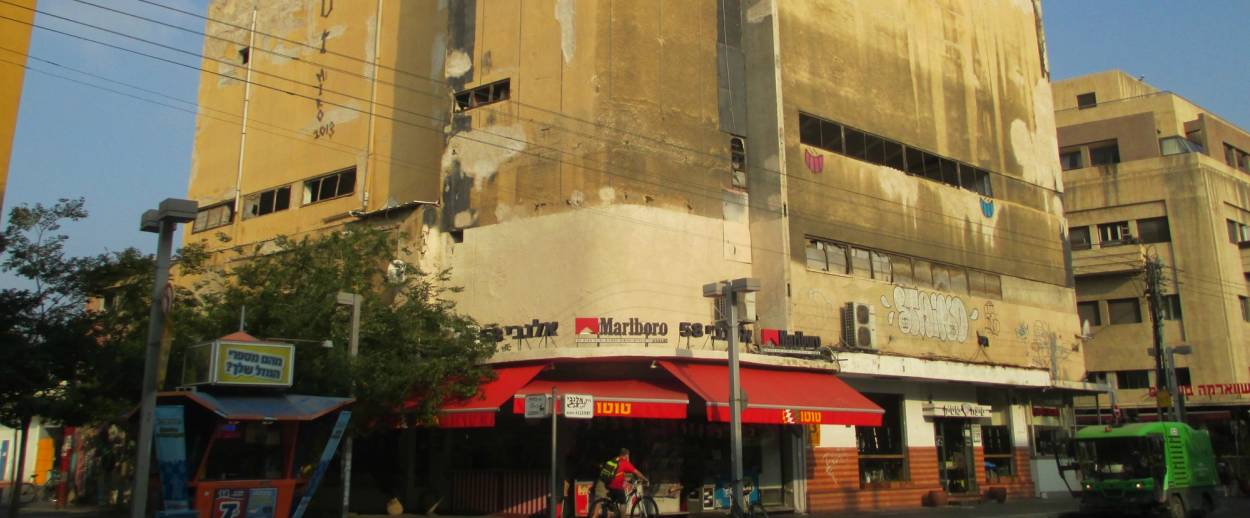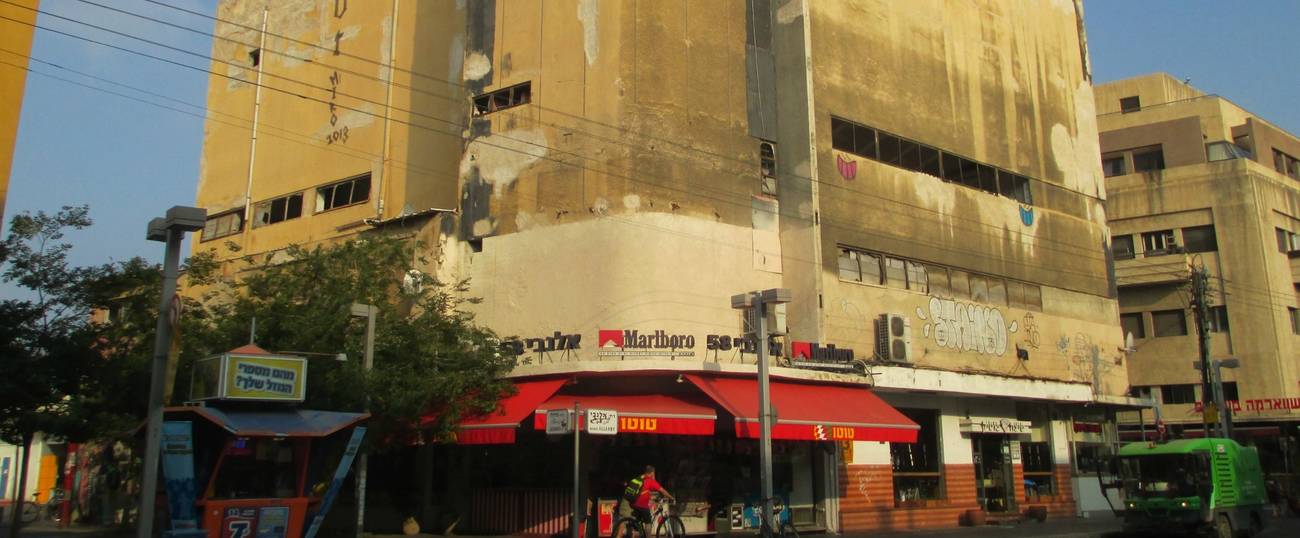Farewell to Kolnoa Allenby, Tel Aviv’s Temple of Nightlife
For a few blissful hours, you could escape reality and feel nothing but the beat of the music




Like all the finest adolescents, Tel Aviv in the 1990s was brilliant and awkward. Not yet the sophisticated city it is now, it hid its insecurities in style, faking it in the hope that one day it would make it as well. It only had a handful of worthy places—two good restaurants, one decent bar—but those were so sublime that you couldn’t be bothered by the slim pickings. And towering over this city busy being born, a light unto the young and the restless, was Kolnoa Allenby.
It was built in 1937 as a movie theater by and for the German-Jewish refugees who sought to erect the New Berlin on the shores of the Mediterranean. Designed in the style of the Bauhaus, it was true to the teaching insisting that form follow function: Tall and stark, it was a building built for a screen. From Gone with the Wind to Jaws and The Godfather, the theater was where Tel Avivis went to watch cinema.
Until, of course, they didn’t. As Israel entered the 1980s, multiplexes started popping up, offering a gluttony of choices in both entertainment and refreshments, and stand-alone theaters became increasingly obsolete. In 1990s, Kolnoa Allenby went dark.
But in a city starved for any form of relief from unbearable stress, a majestic empty building was more of a dare than a tombstone, and a small group of entrepreneurs took over the building and opened the doors once more, this time as a nightclub. The innovations they instituted seem mundane these days, but, at the time, they were revolutionary: A kickass sound system, a top-notch DJ—DJ Choopie—in residence, a bouncer outside to keep the trouble makers at bay. With no Internet to spread the word, these knights of the nightlife depended on flyers to advertise their parties, which made them feel more like religious gatherings than commercial enterprises. For many of us coming of age in the nineties, crowding together with two thousand people as the bass thudded and the strobe lights twittered was as close as you can get to the divine.
More than just a club, the Allenby, as we called, was a demilitarized zone, a safe space where you could forget all about the realities of the outside world for a moment. On Sunday through Thursday you might’ve been a soldier fighting a neverending war, but on Friday night you could take off your uniform, put on a funky costume, and come prance like they did in Amsterdam or London or New York. My favorite was a line of Mod parties, in which sweaty sabras dressed up in suits, skinny ties, and bowling shoes and danced to the Kinks and The Who and The Small Faces and felt, for two or three blissful hours, nothing but the beat.
Soon, other promoters had similar ideas and similar clubs opened up everywhere. Soon, start up nation happened and flushed the town with cash. Soon, we were numbed by the Internet and a torrent of TV channels that made us feel that much more connected to the rest of the world and that much less inclined to congregate in our sacred space and sway together. Soon, the Allenby shut down, and soon after that it was sold to real estate developers.
Yesterday, it was demolished. The new owners plan to build fancy condos. Someone passing by asked them if these condos would welcome young people who wanted their own slice of the Tel Aviv dream. “Yes,” chuckled one of the developers, “but only if they have very rich parents.”
Liel Leibovitz is editor-at-large for Tablet Magazine and a host of its weekly culture podcast Unorthodox and daily Talmud podcast Take One. He is the editor of Zionism: The Tablet Guide.